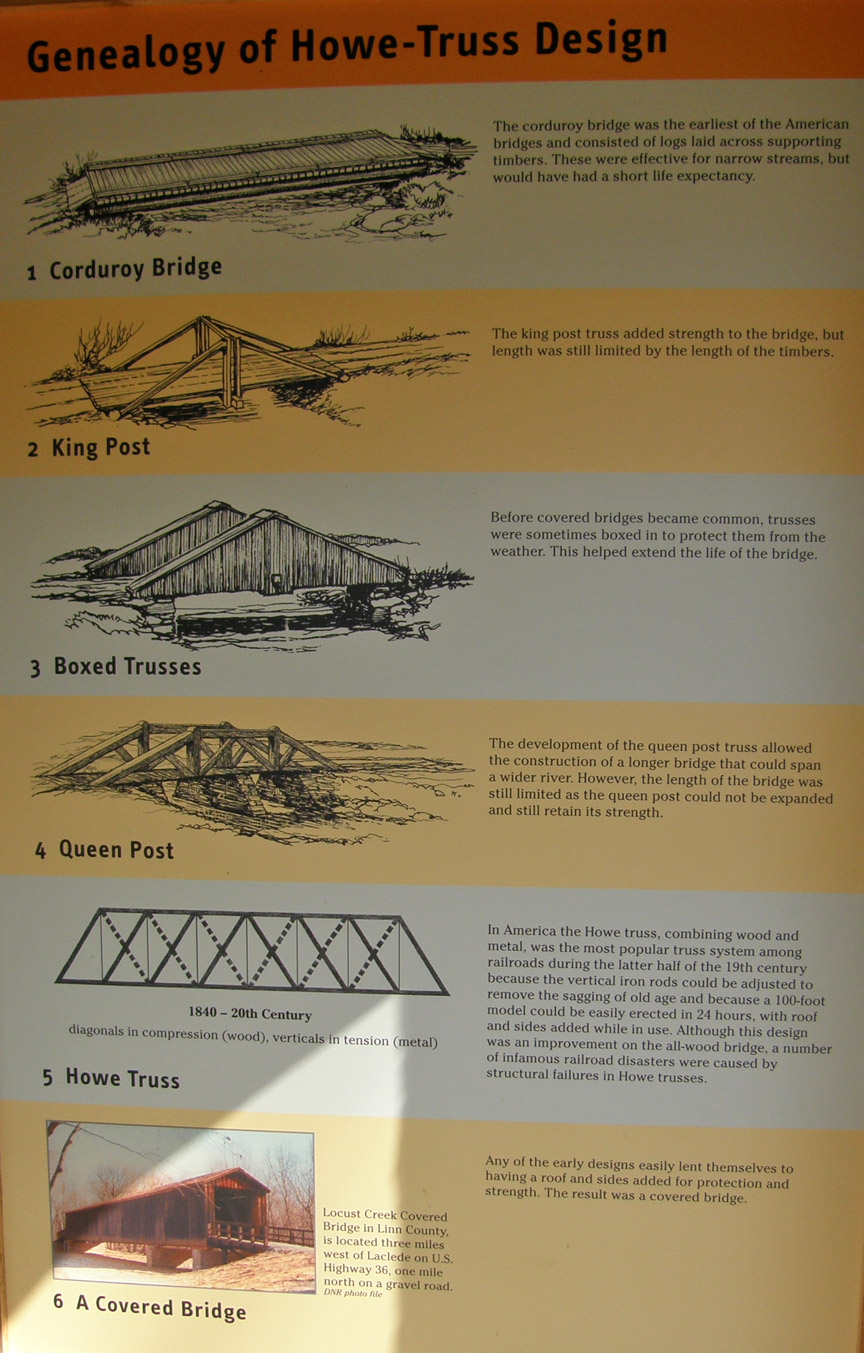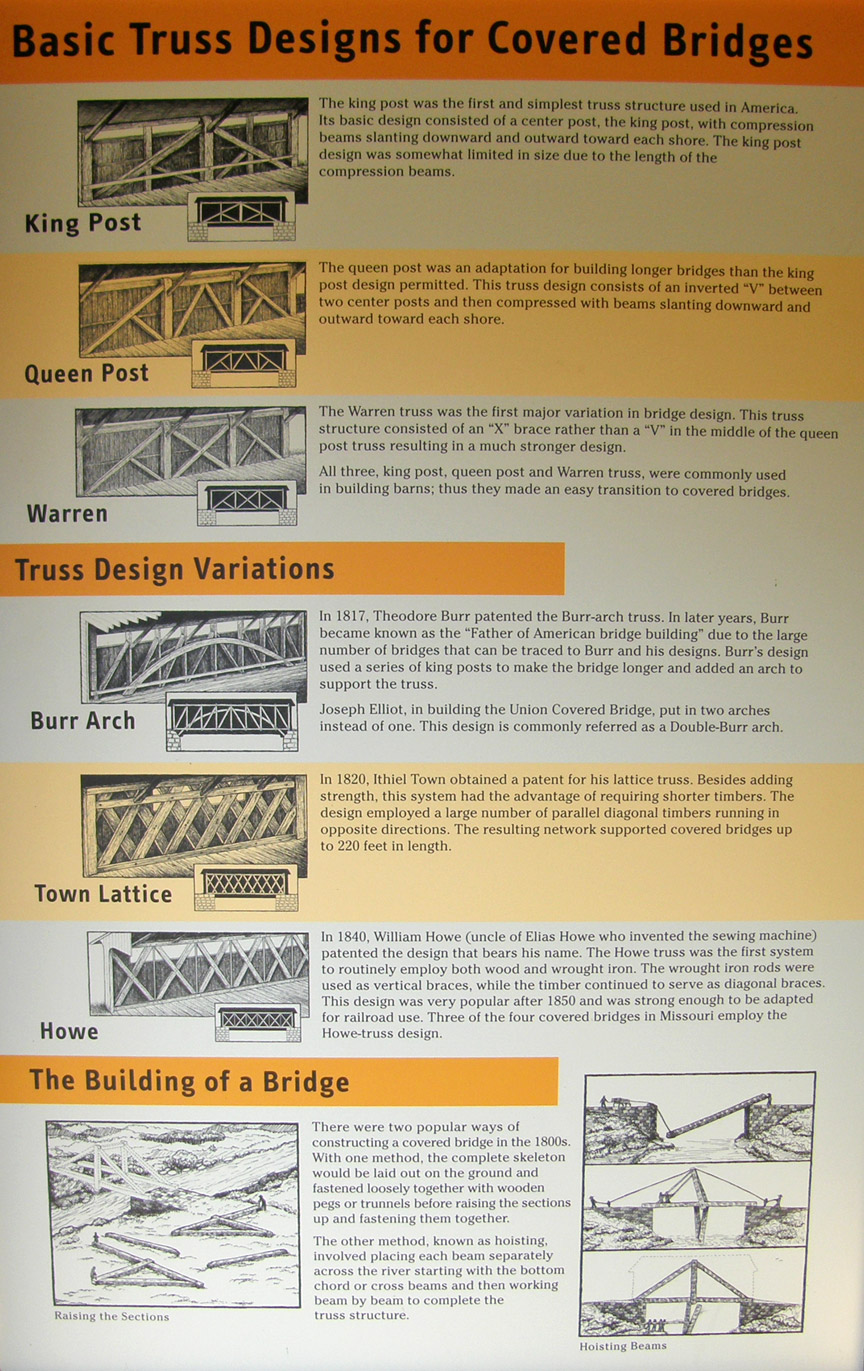

Sandy Creek Covered Bridge

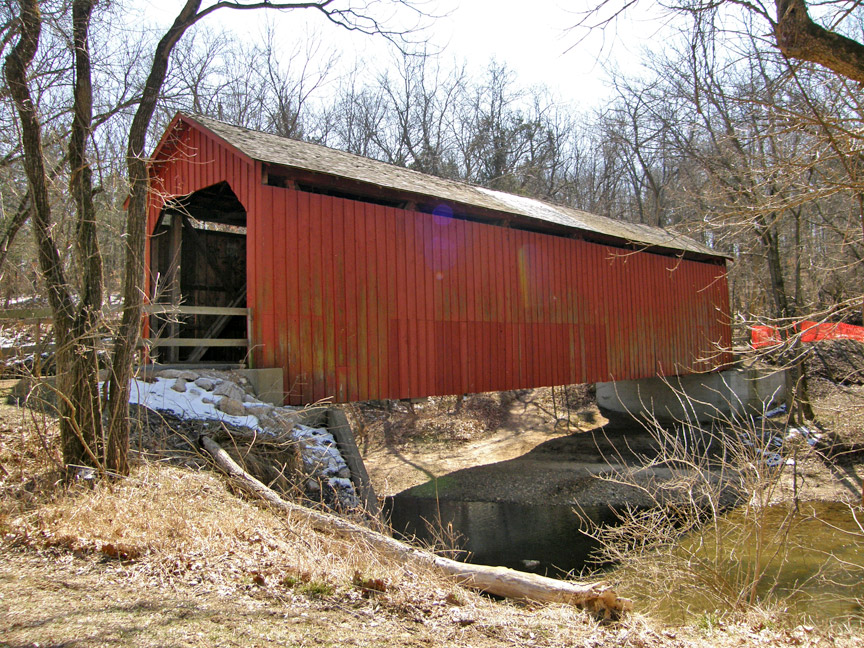
Sandy Creek Covered Bridge
Sandy Creek Covered Bridge boasts the picture-perfect appearance of an old red barn. It was one of six bridges built in 1872 to allow passage from the Jefferson County seat of Hillsboro to St. Louis.
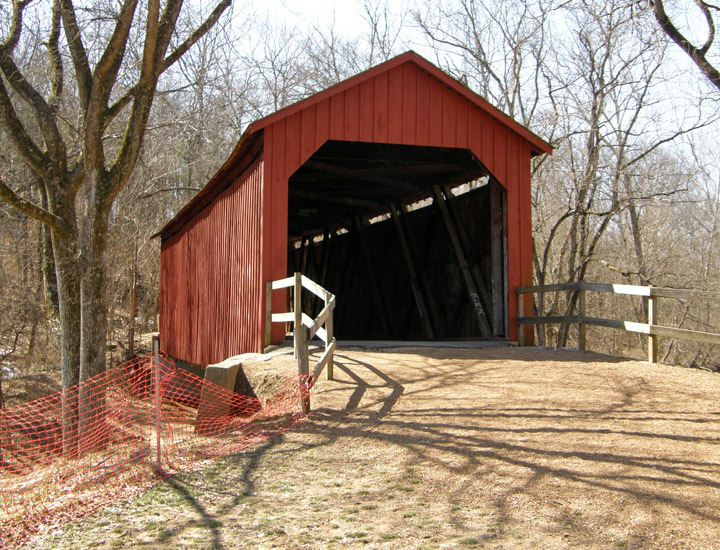
GPS
N38 17.65
W90 31.59
An estimated 30 covered bridges once spanned many of Missouri's rivers and creeks, providing vital links to travelers. Today, Missouri's four remaining covered bridges only serve as reminders of days gone by. Sandy Creek Covered Bridge is one of those reminders.

John H. Morse constructed Sandy Creek Covered Bridge in 1872 as part of a
countywide building program in Jefferson County following the Civil War. Morse
made a proposal in May of that year to span Sandy Creek with a "wood covered
bridge" 74 feet, 6 inches long and 18 feet, 10 inches wide, with an entrance
height of 13 feet. It was one of six covered bridges built on the Hillsboro and
Lemay Ferry gravel road connecting the county seat of Hillsboro and St. Louis.
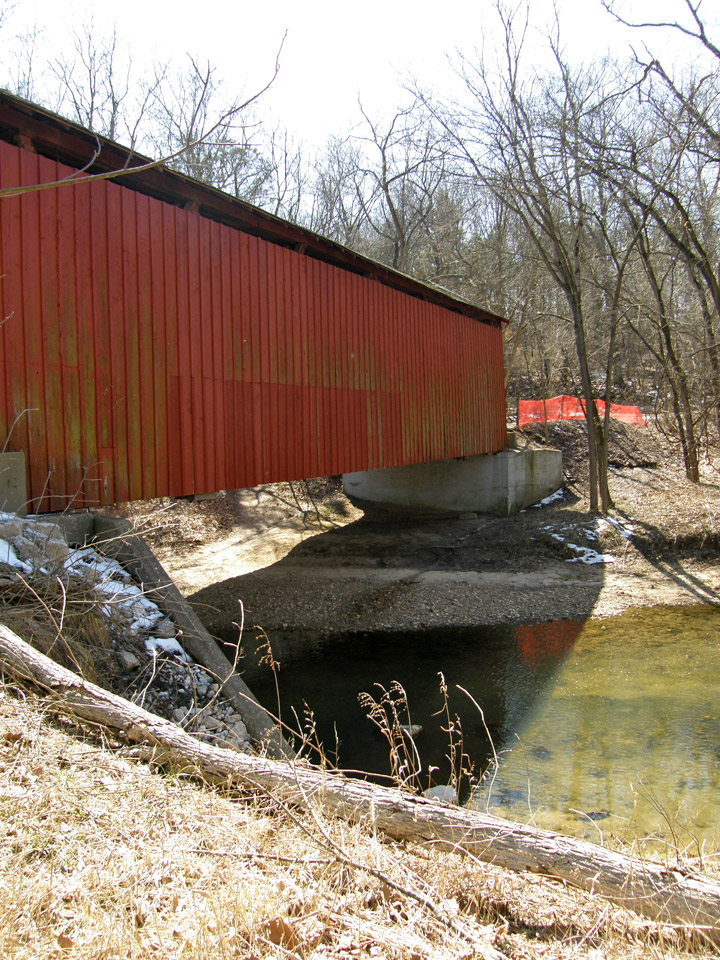
Although there were many advantages to the shelter of the roof and sides, the
main purpose behind covering bridges was to protect the intricate structural
network of iron and timber trusses from the weather. The coverings also added
strength, which reduced sagging and listing. Riders in uncovered buggies and
carriages often used the bridges as shelters from the wind, snow and rain.
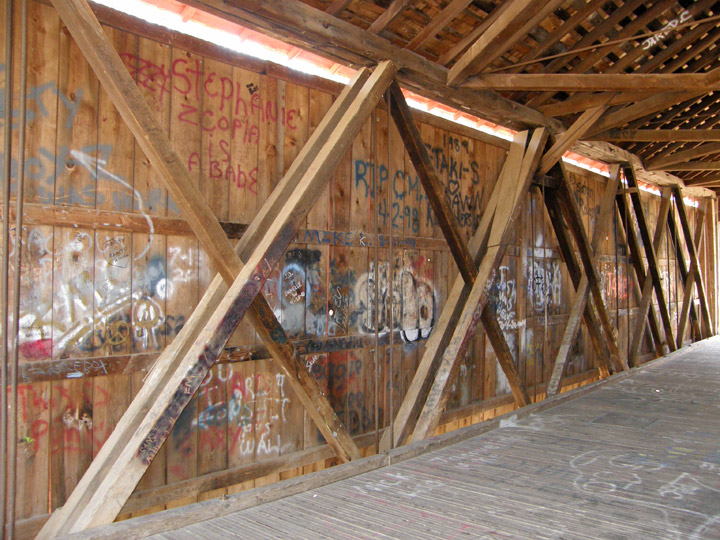
Howe Truss
Morse built Sandy Creek Covered Bridge using the Howe-truss design, named for William Howe. Howe patented his design in 1840, which featured the use of vertical rods to draw wooden members tight against the top and bottom of the bridge. Three of the four remaining covered bridges in Missouri were built using the Howe-truss design, including Sandy Creek, Burfordville and Locust Creek covered bridges.
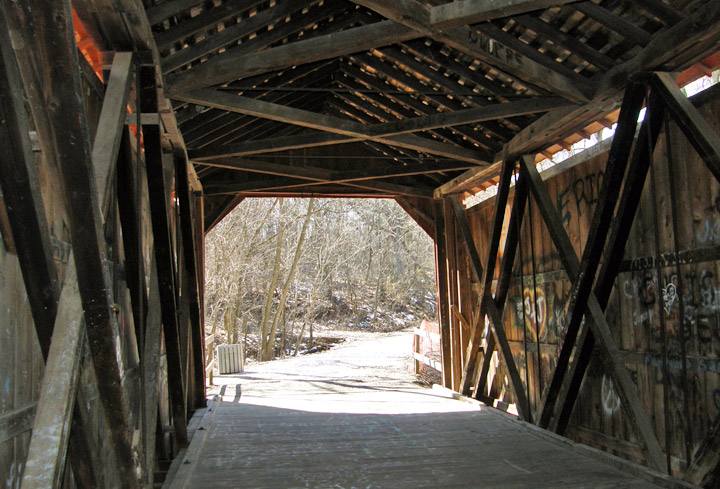
Sandy Creek Covered Bridge remained intact until the spring flood of 1886
destroyed it. In August of the same year, Henry Steffin rebuilt the bridge to
the original specifications and approximate configurations, using some of the
original timbers and abutments. The project cost the county $899.
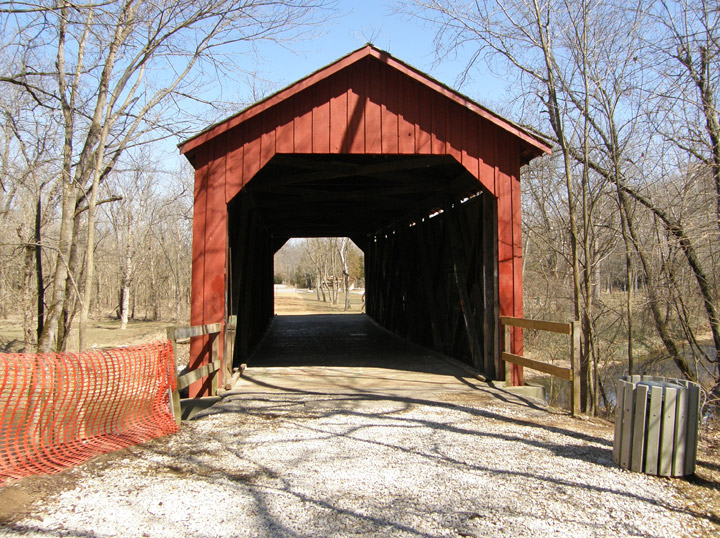
In 1967, the Missouri Legislature passed a bill authorizing the Missouri State
Park Board to take possession of, repair and preserve the five remaining covered
bridges in the state. The Mexico covered bridge washed away by a flood before
ownership could be transferred to the state, leaving only four.
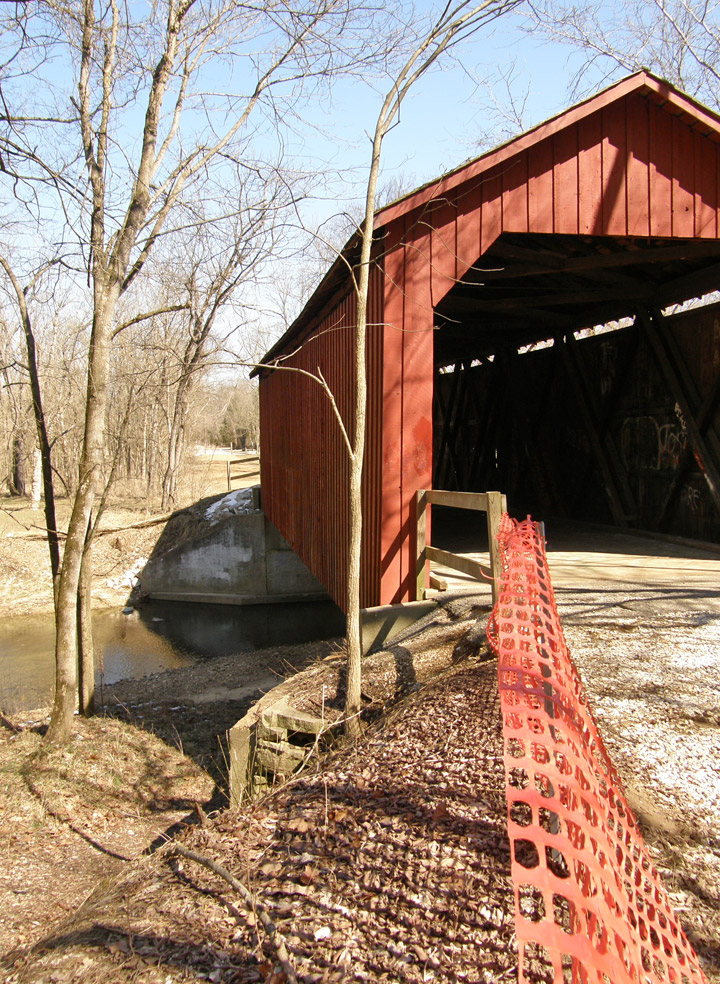
Sandy Creek Covered Bridge was listed in the National Register of Historic
Places in 1970. By 1984, extensive flood damage demanded a thorough restoration
of the bridge. Today, the bridge is open only to pedestrian traffic.
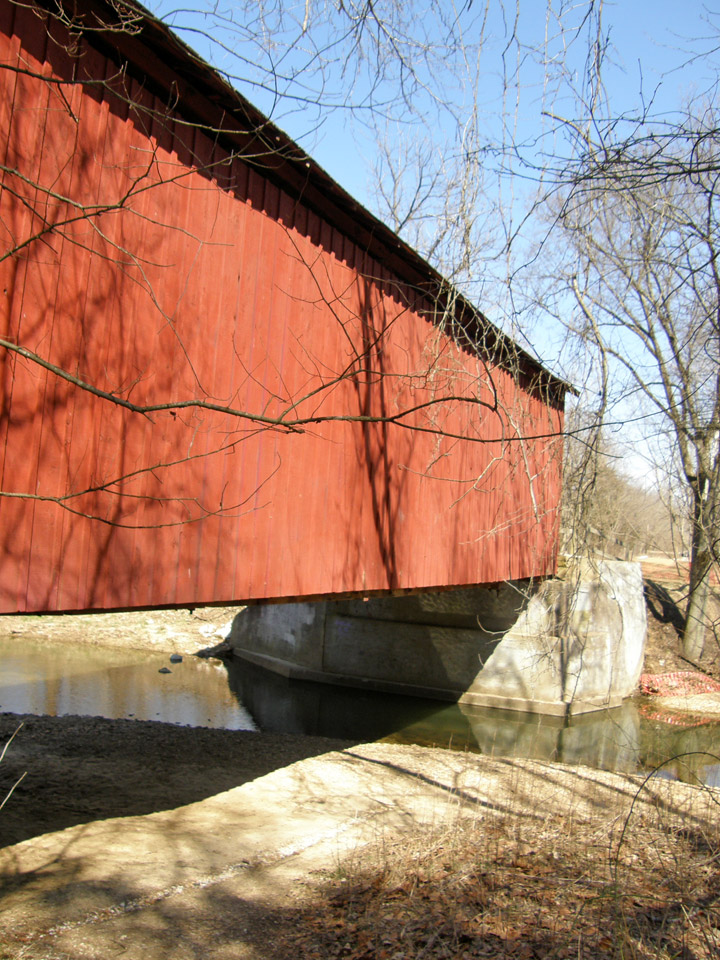
Sandy Creek Covered Bridge State Historic Site includes 205 acres of land
adjoining the bridge. After taking a stroll across the bridge, visitors can
learn more about the history of the bridge on the outdoor interpretive display,
then sit and enjoy a picnic lunch in the shaded picnic area near the bridge. The
red barn like appearance of the bridge and the natural setting surrounding it
make an ideal scene for photographs or paintings.
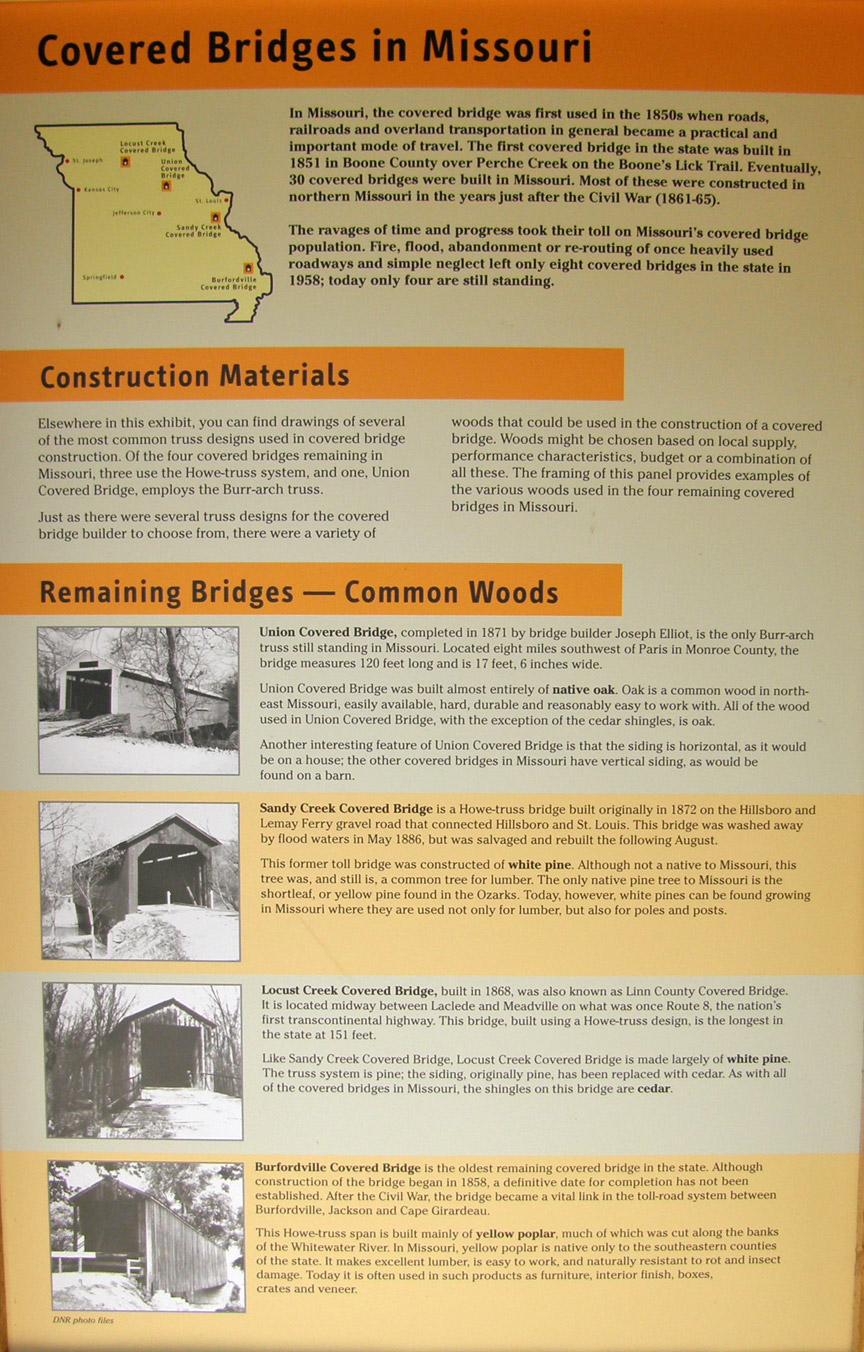
Visit all four of Missouri's remaining covered bridges, each with its own story
and style. Burfordville
Covered Bridge, Cape Girardeau County, is part of Bollinger Mill State
Historic Site. Both historic structures side-by-side provide artists and
photographers with a picture-perfect setting.
Locust Creek Covered Bridge,
Linn County, once housed the nation's first transcontinental road, Route 8.
Union Covered Bridge, Monroe County,
is the only example of the Burr-arch truss system in Missouri. It served Monroe
County for 99 years and remains an important structure in the area's history.

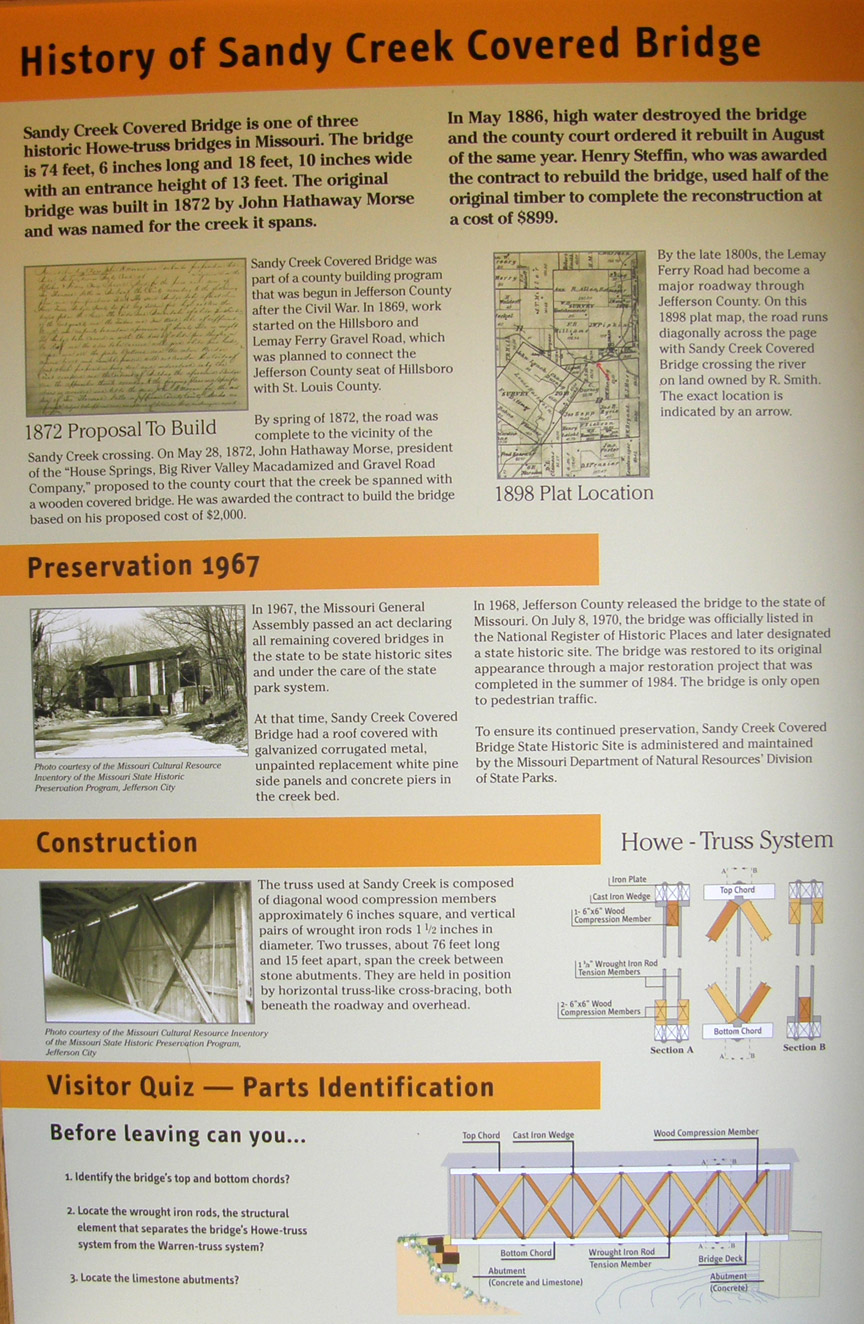
Missouri's surviving covered bridges are precious examples of fine craftsmanship
using simple but effective engineering techniques. They serve our generation as
eloquent reminders of the texture of life in days gone by.
